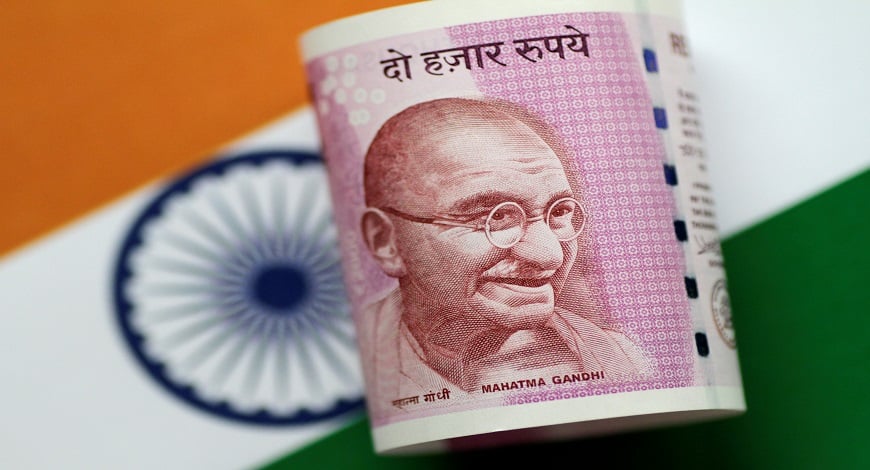Furthermore, the slowdown in the economy last year has caused significant pain to MSMEs due to high-interest rates in the lending landscape inhibiting their operational capabilities
As India anticipates the upcoming budget before the crucial general elections, the spotlight is on the micro, small and medium enterprises (MSMEs) sector yet again. Considered as the backbone of the Indian economy, the sector contributes significantly to employment generation, exports and the country’s gross domestic product (GDP).
 The industry, despite all the contributions to India’s growth, still faces major hurdles such as delayed payment, access to greater capital and much more.
The industry, despite all the contributions to India’s growth, still faces major hurdles such as delayed payment, access to greater capital and much more.
According to a report, the sector is emerging out of the crisis after the pandemic; several parameters point to its steady growth. The demand for loans, for example, in the sector increased 33 per cent in Q1 FY23-24, whereas delinquencies are declining as NPAs have improved across segments of MSME lenders and borrowers.
Industry leaders in the past have expressed that the government has done its bit to support the sector. Notably, the pre-budget period is crucial for assessing the challenges faced by MSMEs and proposing strategic measures to foster their growth and resilience. Although this year’s budget is going to be vote on account, the expectations from the MSME sector are high.
“To achieve the vision of making India a USD 5 trillion economy while creating a new self-reliant nation, the government should introduce a much-needed policy framework mandating large corporates to include the MSME segment in their business models in some or the other way. This can be done by procuring a certain percentage of the priority sector’s business or aiding them with the current technological innovations and marketing tactics to bolster their business growth, said Gurjodhpal Singh, Chief Executive Officer (CEO), Tide India.
Furthermore, the slowdown in the economy last year has caused significant pain to MSMEs due to high-interest rates in the lending landscape inhibiting their operational capabilities. Therefore, soft loans at minimal interest rates or any reduction in the SME lending rates will provide impetus to the sector’s steadfast growth. On the other hand, the rising interest rate would pose a risk to the MSME portfolio of lenders.
As the whole world is undergoing massive digital transformation, India’s significant chunk of the MSME population that resides in tier two, there and four cities lacks digital awareness and inclusion to a great extent. “The government must introduce certain initiatives with a focus to train and coach the sector on the technological advancement and marketing front to spur digitisation across the country,” added Singh.
Recently, Deloitte in a report has recommended the government to provide greater credit access to micro, small and medium enterprises (MSMEs) to enhance their capability in advanced manufacturing for the semiconductor, medical equipment and industrial equipment segments.
The report stated that only 15 to 20 per cent of the MSMEs have access to formal credit. Greater formalisation could see demand for formal credit jump by 30 to 50 per cent, it added.
“The MSMEs’ desire for credit has significantly increased, but there is still a Rs 20 to 25 trillion credit gap in the industry as a whole. One of the primary obstacles encountered by these MSMEs is the problem of delayed payments. This hampers the working capital flow and competitiveness of these enterprises in the market, preventing them from seizing new possibilities and fulfilling orders,” stated Sundeep Mohindru, Promoter and Director, M1xchange.
According to the Samadhaan portal, which tracks issues related to delayed payments, only 33,262 of the 1.68 lakh complaints have been resolved. To achieve the government’s goal of increasing the contribution of MSMEs to the GDP from 30 to 50 per cent by 2025, it is necessary to establish policy frameworks that specifically target these challenges faced by MSMEs and help in resolving them.
More Money Required
Experts have urged for the support for incubators and accelerators is another vital expectation, recognising that access to funding is a lifeline for startups and fintech firms. With a slight dip in funding in early 2022, the industry is expecting that the government will introduce measures enhancing funding opportunities and simplifying the fundraising process.
“The budget’s focus on fostering an investor-friendly environment aligns with recent trends, showcasing a robust funding ecosystem that saw Indian startups raise a record USD 32 billion in 2022,” said Manish Kumar, Founder and Chief Executive Officer (CEO), KredX.
With over half of the USD 5 trillion economic dream of the nation resting on the shoulders of MSMEs, there have been several policy initiatives undertaken over the last couple of years to boost their productivity. The expectations from the upcoming budget will be to continue on that path through fiscal support.
For instance, of the 6.3 crore MSMEs in India, only half are registered on Udyam – a platform that creates many opportunities for GST and non-GST registered small businesses to avail of government schemes, production-related incentives and formal channels of credit. A major driver will be to bring the remaining half to register on Udyam, which will act as a catalyst for MSMEs to formalize and reap the benefits.
“The regulator has been prudent with corrective measures to stem inherent risks arising out of unsecured consumer lending, which has been growing rapidly due to digitization. The government needs to come out with supporting measures that compel banks and NBFCs to shift their lending portfolio more towards small business working capital loans, said Sundeep Mohindru, Promoter and Director, M1xchange.
Mohindru added that some measures could be in the form of incentives for banks and NBFCs to use technology to minimise risks while providing collateral free Working capital lending to MSMEs will be a win-win. Such support would not only boost business activity for banks but also facilitate the rebalancing of their portfolios.

